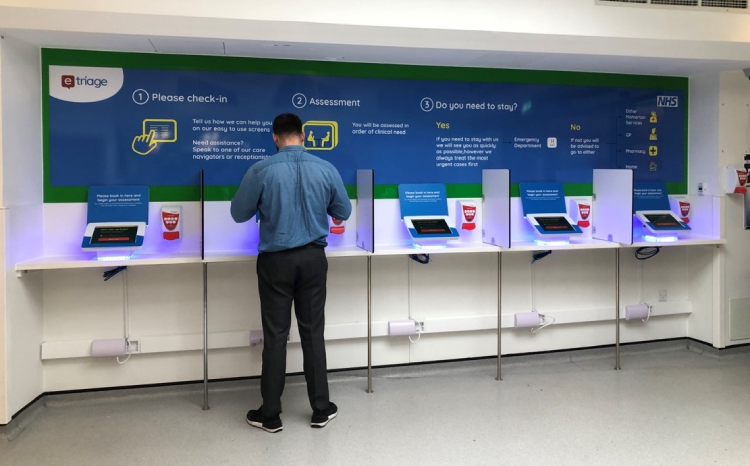The NHS Number
- 9 April 2009
 |
|
Julie Tindale, |
In the latest column from NHS Connecting for Health, Julie Tindale, national clinical lead for the NHS Number Programme, explains why she is passionately committed to the NHS Number. She also outlines how the programme is promoting the use of the NHS Number: and why compulsion is not its chosen way forward.
As the national clinical lead for the NHS Number Programme – and a midwife by background – I strongly believe that the use of the NHS Number is fundamental as a key identifier in supporting safer patient care.
In using the allocated NHS Number throughout the patient care pathway we reduce the risk of patient misidentification.
In my experience, when a baby arrives, some parents have not agreed on a name – and other parents will have cultural and religious conventions that mean that their baby will not have the name that it will be known by for the rest of its life.
By allocating the NHS Number as close to birth as possible (within the first hour of life), the baby will be identifiable and any relevant medical, surgical or pregnancy related issues will be linked by the NHS Number.
Dr Simon Eccles, medical director of NHS Connecting for Health, emphasises: “The NHS Number should not be a discussion. It is an essential safety feature of care in the NHS.”
He also says: “The National Patient Safety Agency and the NHS medical director have both made the importance of the NHS Number absolutely clear.” And: “NHS Connecting for Health is ensuring all new systems can and do use the NHS Number.”
Operational Information Standards
NHS Connecting for Health’s NHS Number Programme has been formed to support safer and more effective use of the NHS Number – the national unique patient identifier.
This will be achieved through delivery of Operational Information Standards for the use of the NHS Number, with different standards addressing the needs of different care setting areas while still creating a consistent approach.
To date, two standards have been delivered. The Operational Information Standards for general practice and secondary care were published by the Information Standards Board for Health and Social Care, (ISB HaSC) in December 2008 and a supporting implementation guidance document was published at the same time.
As part of the development of these two standards, the NHS Number Programme engaged with a wide number of GPs, primary care trusts and trusts, as well as other key programmes, including the NHS Summary Care Record, Demographics Programme, Picture Archiving and Communications Systems (PACS), Choose and Book and HealthSpace.
Why no compulsion?
The NHS Number Safer Practice Notice published in September 2008, mandated the use of the NHS Number as the national patient identifier with the option of using this in conjunction with the local hospital numbering system.
Readers of E-Health Insider have asked why the NHS Number is not made compulsory, so that it becomes the primary and sole identifier in use in the health service.
However, there is little doubt that this would cause considerable problems for those organisations currently unable to comply.
If the NHS Number was the sole identifier then, in cases where the NHS Number could not be determined, there would be no option but to allocate a new NHS Number in order to provide an identifier for the record.
For this reason we are not forcing exclusive use of the NHS Number on trusts; we wish to avoid the risk of creating duplicate records, which would have an adverse effect on data quality and patient care.
We reduce the opportunity for clinical risk to patients by allowing the co-existence of national and local identifiers. This initial implementation phase is necessary to align all systems and business practices so they are able to fully support the NHS Number as an identifier, laying the groundwork for further progress in this area.
Promoting the NHS Number locally
To provide local support, NHS Number leads have been set up in each strategic health authority. Implementation workshops are being carried out in each SHA to provide assistance with implementing the NHS Number in general practice and secondary care.
The NHS Number Programme is aiming to equip the SHA leads with the relevant tools and information to continue this work locally, supporting the implementation and monitoring progress.
Another key area of support provided by NHS Connecting for Health’s NHS Number Programme is public awareness.
A public awareness campaign project has recently been carried out collaboratively with the Department of Health and Teesside primary care trusts that included a mailout to a population of 575,000.
The purpose was to promote the importance of the NHS Number and the need for the public to keep their demographic information held locally within the PCT up to date.
Initial findings from the project have been very positive. Other PCTs across the country are carrying out their own NHS Number public awareness campaigns in various forms, to again highlight and ensure the inclusion of the NHS Number in patient information.
Future developments
Operational Information Standards are to be produced for each care setting area and we are currently working on the NHS Number Standard for adult social care.
Engagement with and the involvement of stakeholders in each care setting is vitally important in the development of such standards. This provides the validation and knowledge to inform an effective and feasible standard and supporting guidance documents that the NHS and social care partners can use with ease.
For more information on the NHS Number visit www.connectingforhealth.nhs.uk/nhsnumber or email nhsnumber@nhs.net




